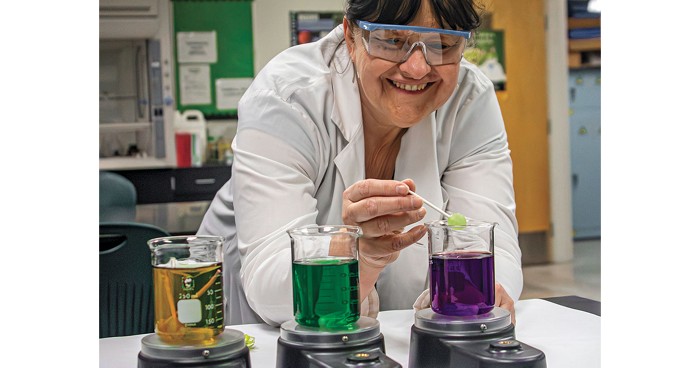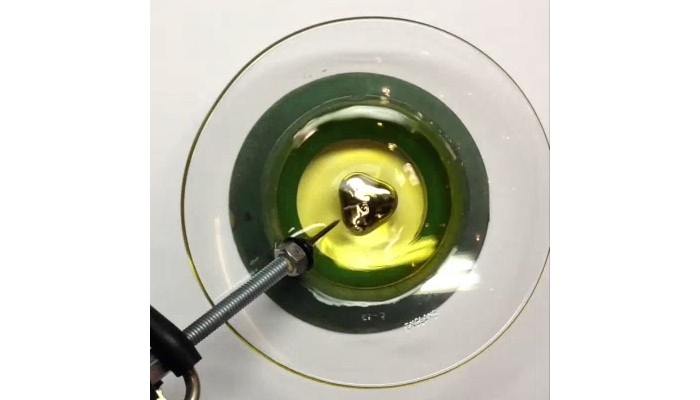Advertisement
Grab your lab coat. Let's get started
Welcome!
Welcome!
Create an account below to get 6 C&EN articles per month, receive newsletters and more - all free.
It seems this is your first time logging in online. Please enter the following information to continue.
As an ACS member you automatically get access to this site. All we need is few more details to create your reading experience.
Not you? Sign in with a different account.
Not you? Sign in with a different account.
ERROR 1
ERROR 1
ERROR 2
ERROR 2
ERROR 2
ERROR 2
ERROR 2
Password and Confirm password must match.
If you have an ACS member number, please enter it here so we can link this account to your membership. (optional)
ERROR 2
ACS values your privacy. By submitting your information, you are gaining access to C&EN and subscribing to our weekly newsletter. We use the information you provide to make your reading experience better, and we will never sell your data to third party members.
Outreach
Newscripts
STEM scouting and snack-food infernos
by Katherine Bourzac
November 17, 2019
| A version of this story appeared in
Volume 97, Issue 45
Badges of STEM honor

It’s 2050, and the moon colony has come under a cyberattack. Who will save us? If we’re lucky, a group of girls from grades 6 to 12.
As part of a Cyber Challenge program held on Oct. 19, the Girl Scouts of the USA sought cadets up to the challenge. To earn a Cybersecurity Investigator badge, which looks like a bug rendered in circuitry, Scouts from grades 6 to 8 must solve a series of such fictional cybercrimes.
The badge is one of 42 new science, technology, engineering, and mathematics (STEM) merit badges launched by the Girl Scouts this year. Scouts can earn variations on the badges by completing creative, educational, and fun (or so it seems to the Newscripts gang) activities tailored to their grade level.
The organization’s emphasis on STEM goes back to its founding. In 1913, members could earn Electrician, Health, and Naturalist badges. To earn the new set of STEM insignia, girls can pick up computer-programming skills for the Coding Basics badge or learn the scientific method and test a hypothesis as part of the Think Like a Citizen Scientist Journey.
To earn a diamond-shaped Space Science Researcher badge adorned with a prism, Scouts in grades 6 to 8 study the properties of light by observing stars through a telescope, detecting infrared signals, and completing other activities. In keeping with the Girl Scouts’ tradition of exploring the outdoors, young adventurers can earn a Snow or Climbing Adventure badge when they participate in activities including backpacking, snowshoeing, cross-country skiing, snowboarding, rock climbing, and trail running.
If you’re anything like this member of the Newscripts gang, all this might be making you nostalgic for your old uniform and sash. To sign up a family member for the Girl Scouts or volunteer to teach girls STEM skills (and maybe get to hand out some of these cool badges), visit girlscouts.org/join.
Incendiary snacks

Interviews with arsonists in the UK have revealed that some of them use an unusual accelerant: crisp packets, or small bags of potato chips. To check these claims, Linda Brownlow and other forensic scientists at the University of Greenwich had to try it out themselves.
First, the scientists ignited small snack samples in the lab, noting their ingredients, shape, packaging, and calorie count and how long they remained on fire. Then, the researchers set lit bags of chips on a car seat—outside, with a fire crew standing by—and watched what happened.
“Investigators initially thought that the packets of crisps would not remain alight long enough to set the seat on fire,” Brownlow tells Newscripts. But it turns out the same things that make chips delicious and fattening—their oiliness and high calorie content—also make them a good fuel.
In each test, after about 200 s, the fire got more intense and spread to the car seat. Brownlow’s student Emily Duffin presented the results at the International Conference on Fire Safety Science and Technology in September.
Gasoline, matches, and other accelerants are guaranteed quick fire starters. But leaving behind a slow-burning bag of chips might be a great strategy for arsonists who don’t want to get caught, Brownlow explains. “The time delay would give them time to escape—I would imagine this would be seen as a good fuel to a potential arsonist,” she says. “We are now extending the research to see if a lit crisp packet pushed through a letter box would start a fire—with no need for the perpetrator to enter the premises.”
Katherine Bourzac wrote this week’s column. Please send comments and suggestions to newscripts@acs.org.





Join the conversation
Contact the reporter
Submit a Letter to the Editor for publication
Engage with us on Twitter